
Увага! На сайті використовуються cookie файли.
The site uses cookie files
Даний сайт має вікове обмеження.
This site has age restrictions!
Я підтверджую, що мені, на жаль, давно виповнилося 18 років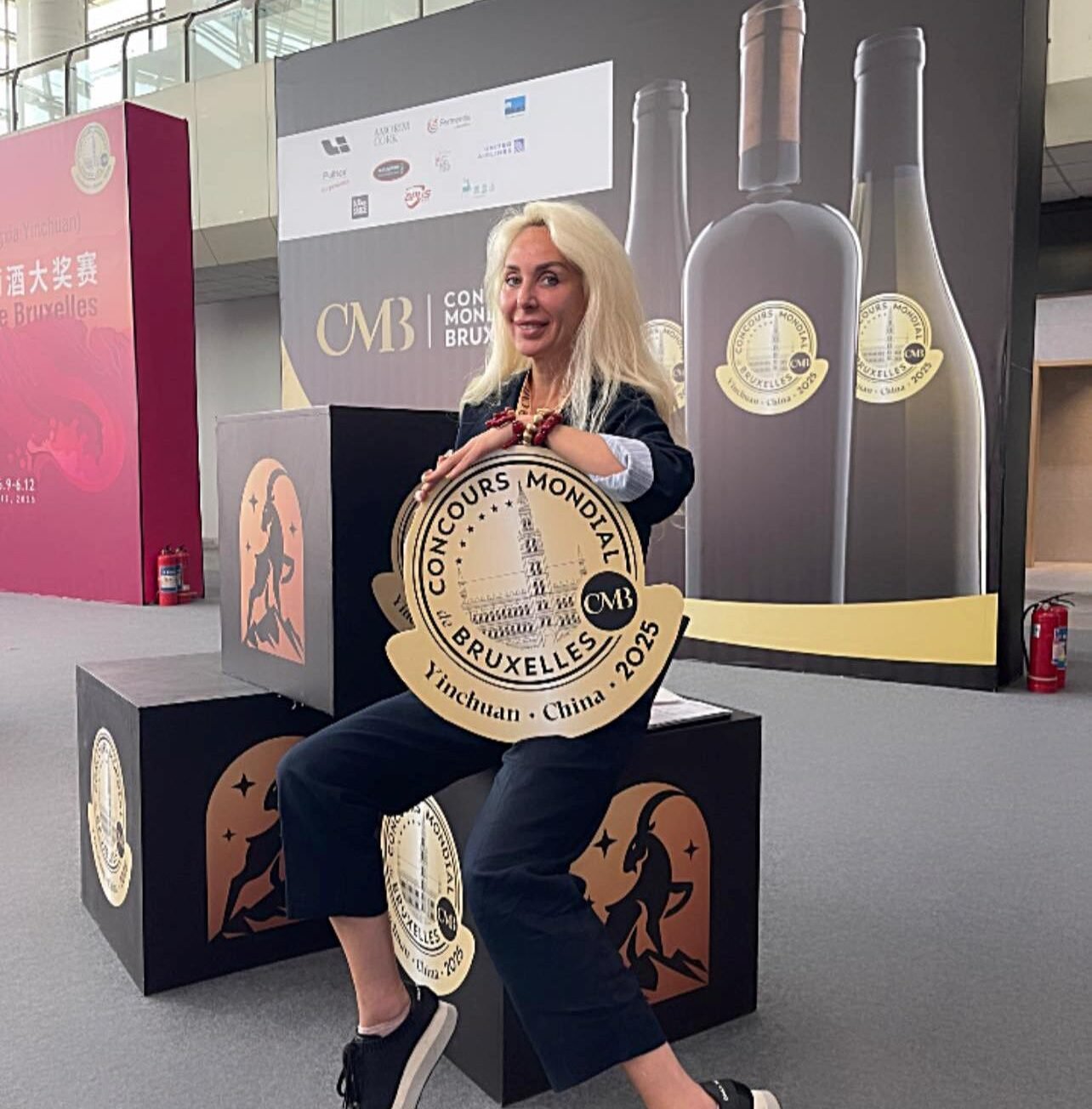
Touch down in Yinchuan and you can feel the city leaning forward, ready to be tasted. For one long weekend, the Concours Mondial de Bruxelles – often called the “world tour of wine competitions” – has pitched its travelling tasting hall at the foot of the Helan Mountains. Founded in Belgium in 1994, the Concours packs up yearly and heads to a new host region, inviting an international jury to judge thousands of unlabeled bottles completely blind. A medal from this show is small – just a compass-rose sticker – but importers, sommeliers and curious drinkers around the globe treat it as a trust mark that a wine has cleared some of the most demanding palates on earth.
Bringing the contest to Ningxia is more than a logistical coup; it’s a statement. China’s high-desert vineyards are still young enough to remember their first planting holes, yet confident enough to ask the world to appraise them on equal footing with Bordeaux, Barossa and the rest. Over the following few pages, we’ll swirl, sniff and decode what this “wine Olympics” revealed. The bottles, the people behind them, and the way ancient Chinese ideas of balance and harmony are quietly reshaped by the world’s perception of a glass of red or white.
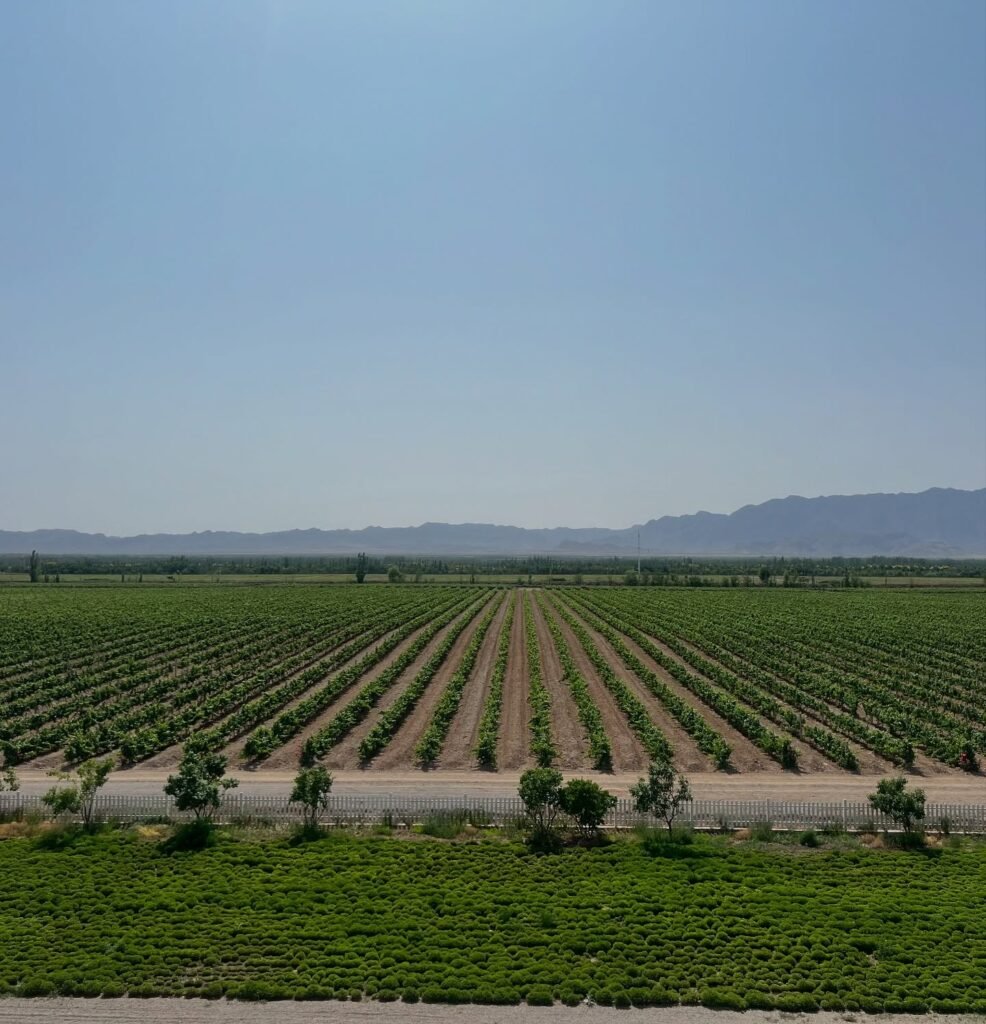
Before judges ever lift a glass, the organisation works through a checklist that has become its trademark:
That framework is why importers treat the Concours logo as a shortcut to due diligence: it signals that a bottle has already passed a rigorous, multi-layer filter covering authenticity, stability, and stylistic merit.
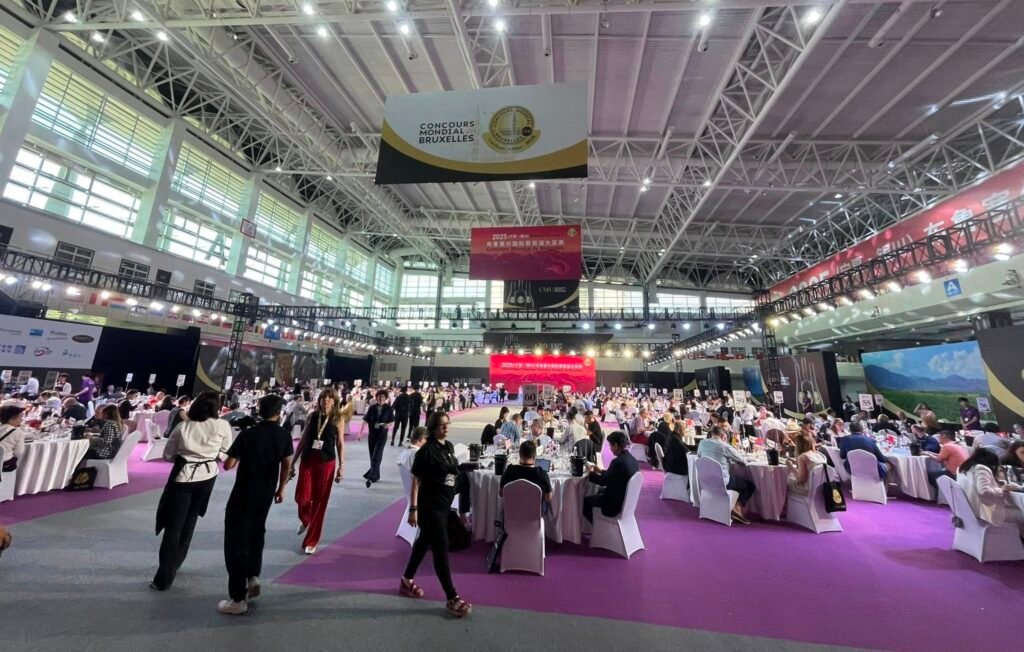
Most wine competitions stay put; the CMB packs its tasting tables and moves yearly. The roaming format forces judges to know a place, not just its bottles, and it parachutes global attention onto regions that traditional trade routes often ignore. Credibility rests on three pillars:
The result is a competition that behaves less like a beauty contest and more like a mobile standards agency—one that landed this year at the northwestern edge of the Gobi Desert.
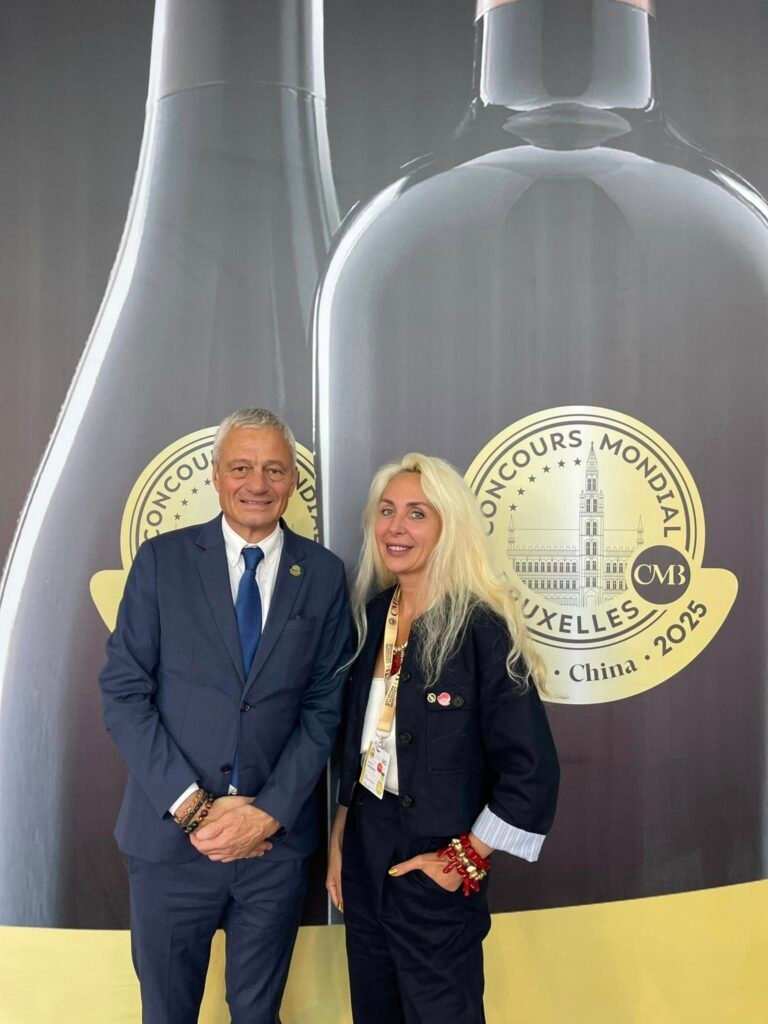
The president of the Concours Mondial de Bruxelles, Mr. Baudouin Havaux, explains the meaning of one of the world’s leading wine competitions this way:
“The goal is to provide the consumer with a guarantee of quality and to open his horizons to new wines, to other countries… Quality comes first, curiosity comes second.
We are currently investing heavily in artificial intelligence, because it can help the consumer, the producer, the importer and the buyer. This is another reason for participating. After all, a small winery cannot hire a powerful agency to determine the fidelity of its style or course. So our report (the evaluation of organoleptic profiles) is its own marketing department for each participant. A competition like the CMB is an ideal marketing tool for a small producer. You pay an entry fee – two hundred and twenty euros – and if you get a medal, you get both analytics and your geolocation, so to speak, and at the same time – world fame.”
(Kateryna Yushchenko’s full interview with the President of the Concours Mondial de Bruxelles, Mr. Baudouin Havaux, as well as the results of the competition, will be published in the following publications).
In Chinese thought, a drink is rarely just a refreshment; it is a ritual. Confucian banquets choreograph toasts that affirm hierarchy and respect, while Daoist writings praise harmony between heaven, earth and the human palate. Today’s guanxi culture still treats a gifted bottle as social currency. These layers colour how wine is perceived: balance reads as yin-yang, a golden label whispers prosperity, and texture – so admired in tea – often counts more than sheer power.
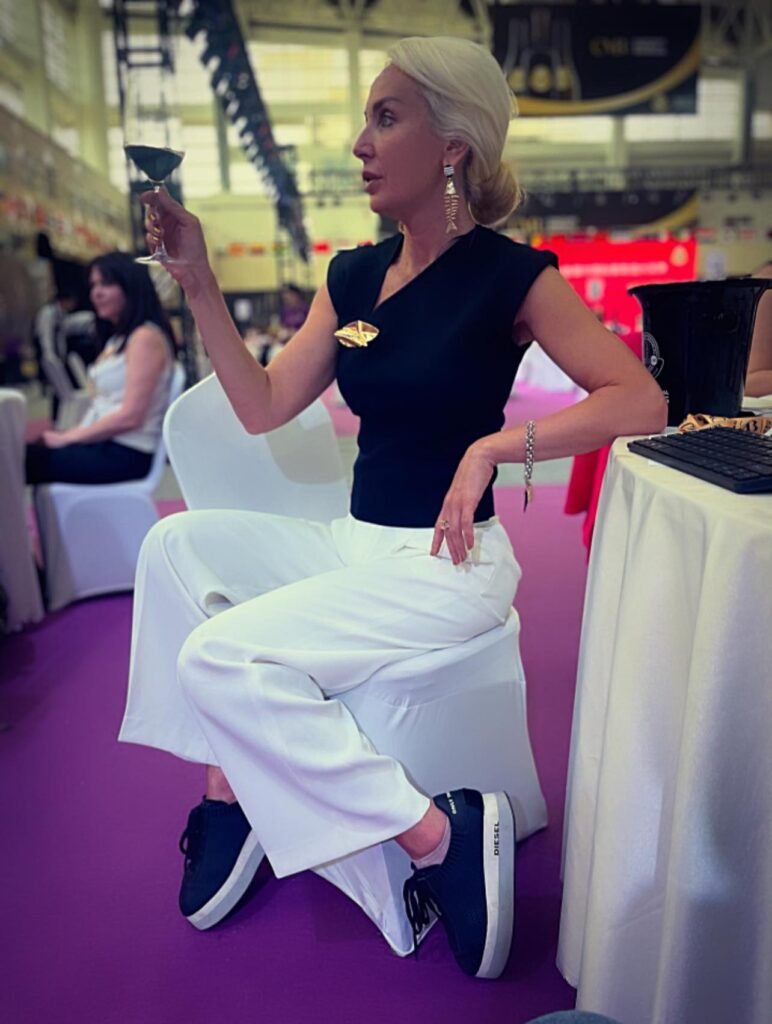
Ningxia taps those sensibilities. Cabernet Sauvignon shows desert herbs and disciplined tannin; Marselan offers violet perfume and velvet grip; and Chardonnay’s saline snap echoes the old salt caravans of the Yellow River plain. The flavours feel familiar and audacious, echoing China’s tightrope walk between heritage and reinvention.
When the CMB shares a stage with the China-Arab Expo, the symbolism deepens: wine becomes diplomatic shorthand, a “language of the world,” in the words of local Party Secretary Zhao Xuhui. Havaux likes that framing; it lets him call the glass a bridge rather than a trade weapon.
China’s total wine consumption has fallen from its 2017 peak, yet premium sales have kept climbing as younger urbanites pivot from quantity to quality and from banquet reds to weekday whites, rosés, and sparklers. E-commerce and Douyin live streams now make or break a label faster than any trade fair.
Ningxia’s high-cost viticulture – every vine must be buried under soil each winter to survive –20 °C, adding roughly thirty per cent to production costs – naturally pushes the region toward the premium tier. That meshes with the consumer mantra “drink less, drink better.”
Yet challenges persist. Experts still note oxidation faults and hasty acid adjustments in some cellars; consistency, not ambition, is Ningxia’s next test. Geopolitics looms too: tariff skirmishes (remember the 2024 brandy probe) remind exporters and Chinese buyers alike that a customs form can cloud a glass overnight. The CMB’s neutral ground – where terroir trumps trade rhetoric – offers respite and perspective.
Inside the tasting hall, the world shrank to the swirl of thirty anonymous glasses and two minutes of silence per wine. Yet between flights, the room buzzed with whispered revelations: a Danish buyer predicted Marselan shelf space in Copenhagen, and a Japanese sommelier convinced Ningxia Riesling would charm sake drinkers. Havaux is right: the competition turns judges into ambassadors. I left with sand in my shoes and a list of bottles to champion back home.
Wine is a mirror and a bridge. It reflects the soil that grew it and spans the distance to whoever finally raises the glass. Three days in Yinchuan proved that a vine buried under desert sand can speak in fluent globalese – and that a tiny compass-rose medal can still guide curious drinkers across continents.
Ningxia wanted belief; the Concours delivered attention. What happens next depends on whether the region can turn trophies into trust, livestream clicks into cellar visits, and poetic talk of bridges into boots-on-the-ground partnerships.
As for me, every future lecture, article or dinner party holds the chance to retell the story of a desert that learned to pour itself into a glass – and to remind listeners that, somewhere between Confucius and AI, wine’s most straightforward task remains the most radical: letting strangers taste the exact moment together.
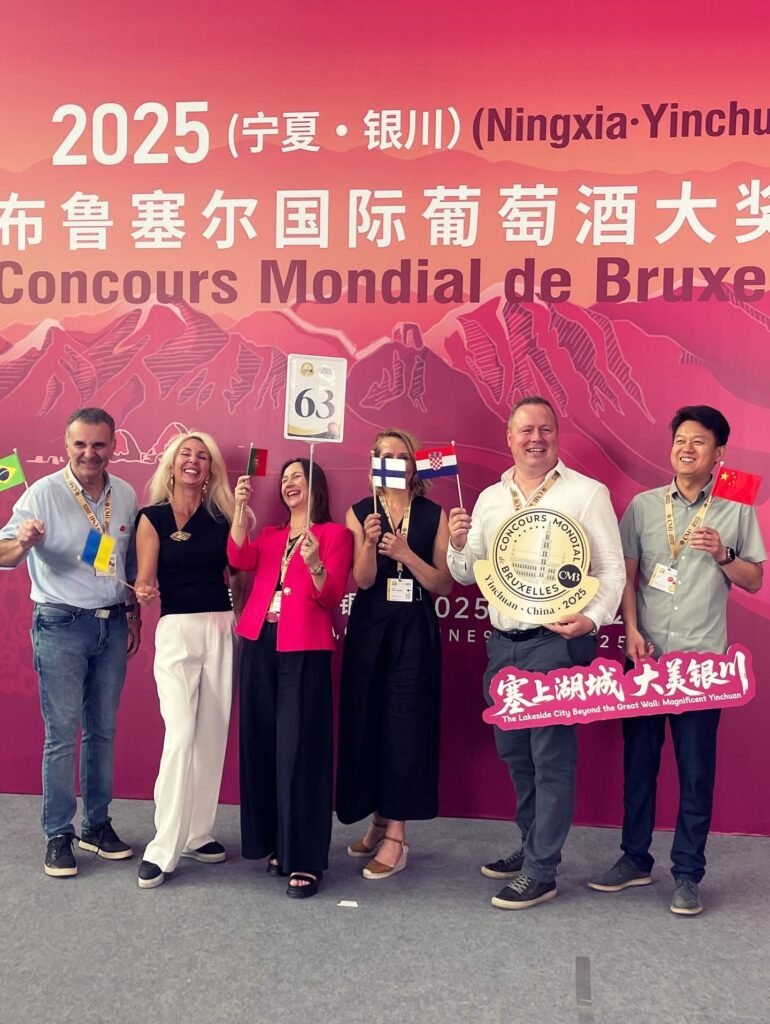
Stepping back from the tasting tables, it struck me how closely the Concours Mondial de Bruxelles mirrors the Olympic Games. Both events roam from city to city, lighting a symbolic torch that spotlights each new host; both gather competitors who have trained for years in quiet determination; and both rely on rigorously neutral judges to ensure that a medal is more than décor – it is proof of excellence under the world’s brightest lights.
Where athletes chase hundredths of a second, vintners chase fractions of a point, coaxing every nuance from vineyard and barrel to edge ahead of their peers. Where Olympians march behind national flags, bottles arrive stripped of labels, their origins anonymous, yet their cultural identities still whispering through aroma and texture. And when the final scores flash – be it on a stadium scoreboard or a tasting-room tablet – the shared hush is the same mixture of anticipation, pride, and reverence for human possibility.
Like the Olympics, the Concours does more than crown winners; it knits together a temporary village of languages and loyalties that dissolves into lifelong networks once the closing ceremony ends. Ningxia’s turn as host kindled a torch of curiosity that now travels home with every judge, importer, and journalist. This enduring flame will illuminate Chinese wine on shelves and in conversations far beyond the Helan Mountains.
If the Olympic ideal is Citius, Altius, Fortius – “Faster, Higher, Stronger” – then this “Wine Olympics” motto might read: Deeper, Truer, Closer. Deeper in understanding terroir, truer in guaranteeing quality, closer in bridging cultures one glass at a time. In that sense, the Concours Mondial de Bruxelles is not just a competition; it is a biennial reminder that, like sport, wine has the power to let the world taste its shared humanity.
⇒ Join our social networks ⇒ Optimistic D+ editors will take this as a compliment.
⇒ Every like is taken as a toast!
Photo: facebook.com/k.yushchenko
12.12.2025
10.12.2025